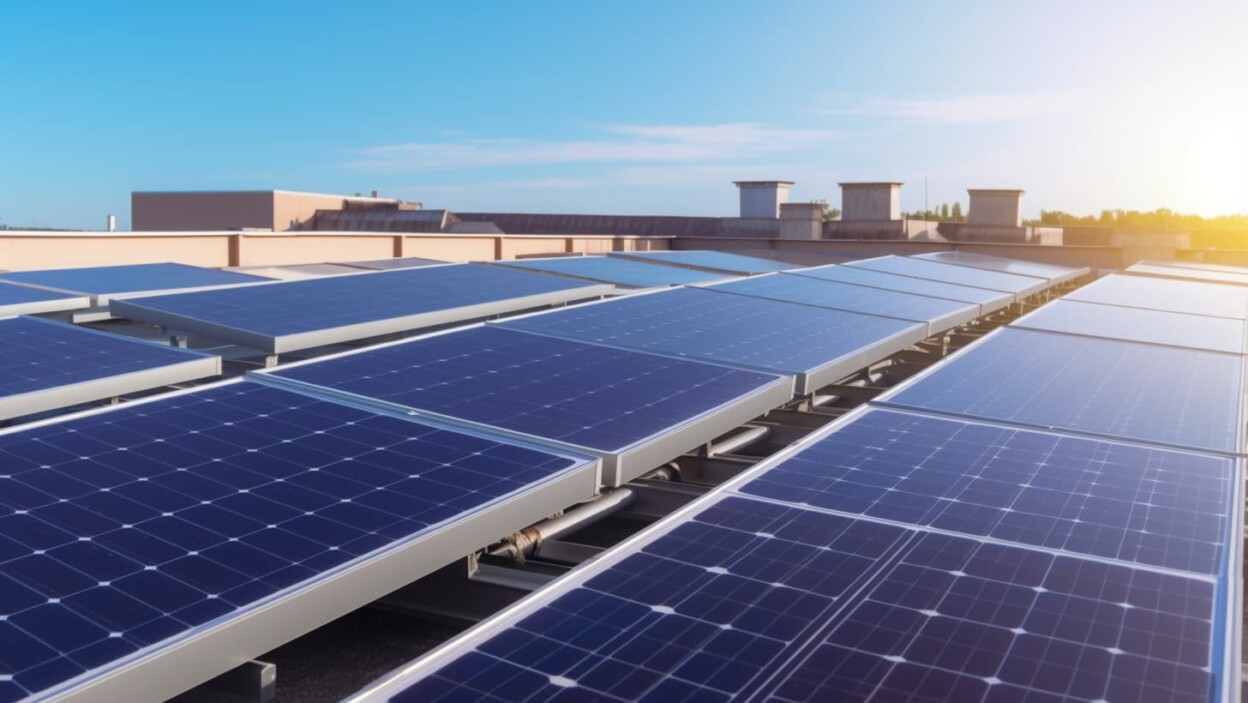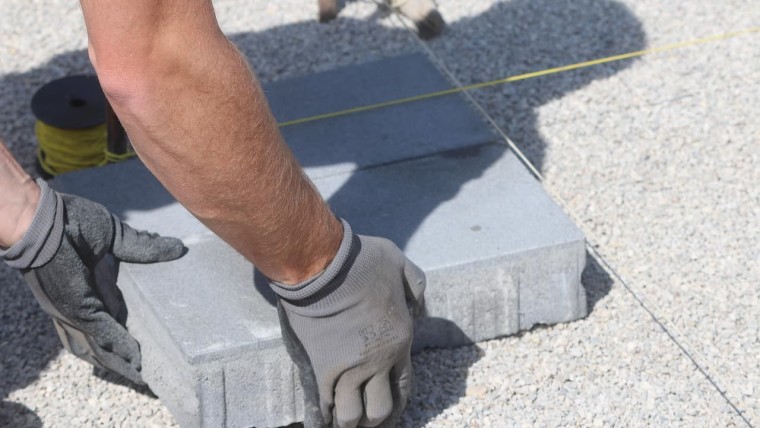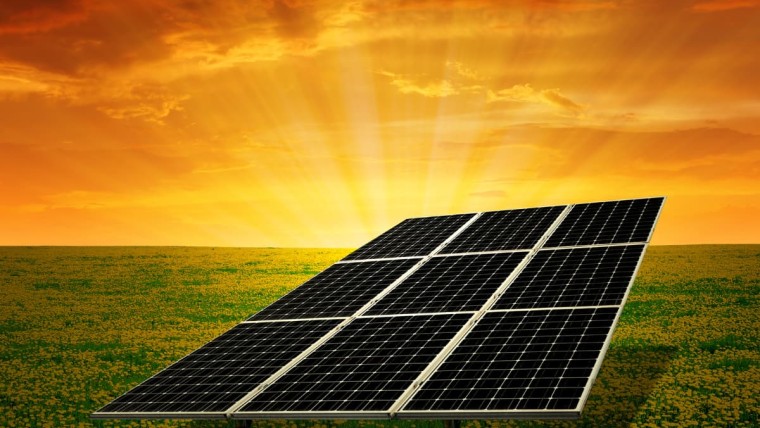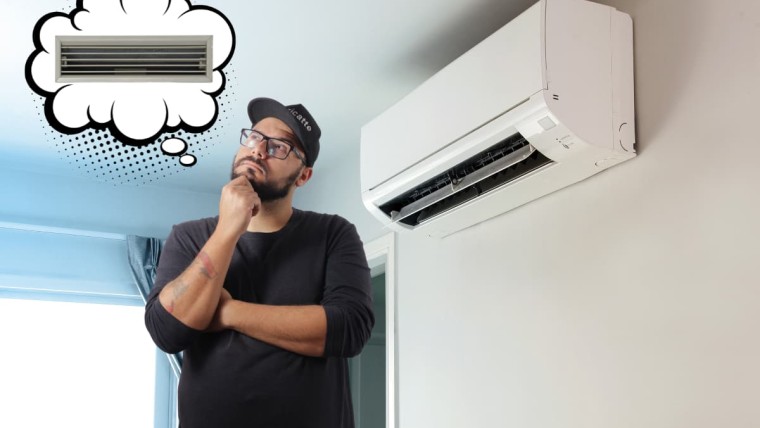Are you thinking of installing solar panels on your home, and wondering about the surface area you need on your roof, the savings you'll make and, above all, the profitability of your project? You've come to the right place.
In this ultra-practical guide, we'll help you estimate the surface area of solar panels you'll need and calculate the profitability of your investment. You'll see, it's simple and quite intuitive!
Estimate your future energy savings in just a few questions
Installing solar panels at home is motivated by the desire to save money on your energy bill and reduce your carbon footprint. To estimate your potential energy savings, ask yourself the following questions:
- What is your annual electricity consumption? ? Consult your electricity bills to find out your consumption in kilowatt-hours (kWh);
- How much electricity do you currently pay? ? Check the cost per kWh on your electricity bill;
- What is the available surface on your roof for the installation of solar panels ? Measure the surface area of your roof in square meters and estimate how much of it can be used to install solar panels;
- How much sunshine is there in your area? ? Find out your region's average annual solar irradiation in kWh/m²/year. You can use solar atlases or local meteorological data to obtain this information;
- What is the efficiency of the solar panels you are planning to install ? Solar panels generally have an efficiency of between 15 % and 22 %, with a theoretical maximum of 31 %.
Once you've answered these questions, you'll have everything you need to calculate the following indicators:
- The number of solar panels required, depending on the power required;
- Solar panel production;
- The cost of the photovoltaic system ;
- The profitability of solar panels, taking into account the options for consuming photovoltaic electricity (total self-consumption, total resale or hybrid use).
What surface area is available for your photovoltaic system?
Your solar panels can be installed in a location that satisfies a few conditions:
- They can be south-facing to capture maximum solar radiation;
- The inclination can be adjusted according to the latitude of the installation site;
- Unshaded location (no buildings, trees or other obstacles) ;
- Sufficient ventilation to prevent overheating ;
- Reasonable accessibility for easy maintenance and servicing;
- Location in compliance with the law.
Contrary to what you might think, solar panels can be installed on many surfaces, not just roofs: building facades, parking lots, open land and even bodies of water. Roofs, however, remain the most obvious choice for residential installations.
How much space is available on your roof?
Simply measure the surface area of your roof with a tape measure, taking care to subtract the area occupied by fixed obstacles such as chimneys, roof windows, vents and antennas. Also subtract any locations that require a north-facing orientation, as well as those that don't allow a slope of between 30 and 45 degrees. Finally, you can eliminate any shaded areas, unless you opt to install microinverters or a bi-tracker inverter.
Once you've estimated the surface area available, you can determine the maximum number of solar panels you can install on your roof. Which brings us to the next point.
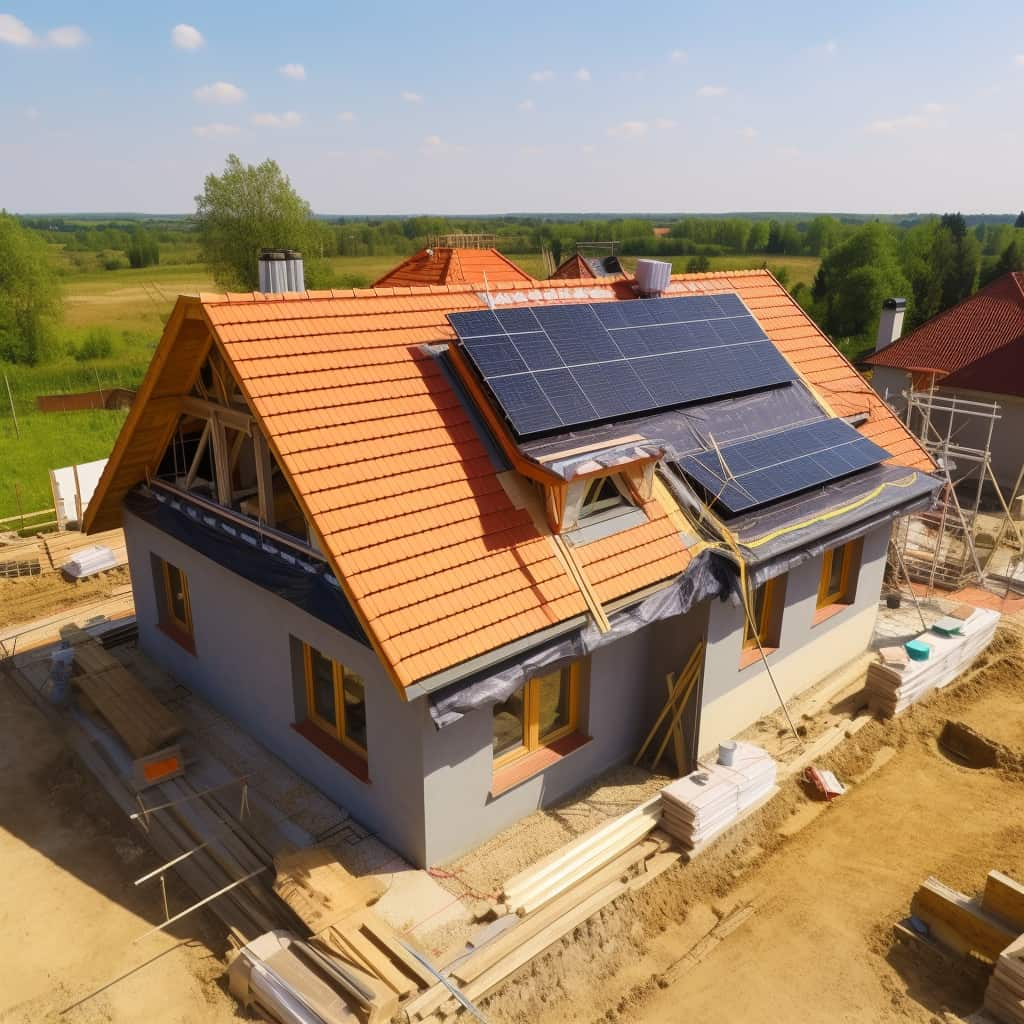
How do you calculate the number of solar panels needed?
It's really quite simple. Just follow these simple steps:
- Calculate your annual energy consumption: the information is on your bill (in kWh);
- Estimate the amount of sunshine in your area;
- Determine how much energy you need to produce, by dividing your annual consumption (in kWh) by the average number of hours of sunshine per year in your region. This will give you the power output required in kilowatts (kW) to cover your consumption.
Example For example, if your annual consumption is 6,000 kWh and your region enjoys 4 hours of average sunshine per day, the production required would be 6,000 kWh / (4 hours x 365 days) = (4 hours x 365 days). 4.11 kW.
- Choose the power rating of the solar panel you plan to buy. This is usually between 250 and 400 watts per panel;
- Finally, calculate the number of solar panels required by dividing the power output required (in kW) by the rated power (or peak power) of the solar panel (in kW). We'll develop this point in a moment. Round this figure up to determine the number of solar panels you'll need.
Example For example, if the required output is 4.11 kW and you choose 300 watt solar panels (0.3 kW), you will need 4.11 kW / 0.3 kW = 4.11 kW / 0.3 kW. 13.7or around 14 solar panels. Please note: make sure you have enough space on your roof to accommodate the number of solar panels you need. It's always advisable to consult a professional to assess the feasibility and efficiency of your photovoltaic installation. Note: solar panels used in residential installations have a surface area of between 1.6 and 2 square meters, with an average of 1.8 m².
| Available area on roof (m²) | Average area of a solar panel (m²) | Maximum number of solar panels on the roof |
| 4 | 1.8 | 2 |
| 8 | 1.8 | 4 |
| 12 | 1.8 | 6 |
| 16 | 1.8 | 8 |
| 20 | 1.8 | 11 |
| 30 | 1.8 | 16 |
How do you calculate the output of your photovoltaic system?
To determine the wattage of your future photovoltaic system, simply refer to your normal electricity consumption. To maximize savings, your system's output should be as close to this as possible. Before giving you the steps to follow, let's first explore the concept of peak power, which is essential for estimating the output of your photovoltaic system.
Peak power: what are we talking about?
Peak power, also known as rated power, is a standardized measurement used to describe the maximum capacity of a solar panel to produce energy under ideal laboratory conditions and at time "T". It is generally expressed in watt-peak (Wp) and is used to compare the efficiency and performance of different solar panels.
We're talking about ideal conditions, and you guessed it: your solar panels won't reach that power. It is generally estimated that the production capacity real is around 85 %. In sum, 1 Wp will give you 0.85 kWh.
In concrete terms, how do I determine the power of my future photovoltaic system?
If you've followed the steps we've outlined, you can easily estimate the output of your future photovoltaic system. Just a reminder:
- Calculate your annual energy consumption in kWh, based on your bill or your Linky meter;
- Estimate the amount of sunshine in your area;
- Determine the energy production required by dividing your annual consumption by the number of hours of sunshine;
- Divide the production power required (in kW) by the actual yield of the solar panels (85 %) to obtain the total peak power required for your system;
- Select the power rating (or peak power) of the solar panels you plan to buy, usually between 250 and 400 watts per panel;
- Calculate the number of solar panels required by dividing the total peak power required (in kW) by the nominal power (or peak power) of the solar panel (in kW). Round up to the nearest whole number.
Total self-consumption, total resale or hybrid configuration?
Don't know what we're talking about? Don't panic, we'll explain. When you install solar panels, you have several options for using the electricity produced. Here's an overview of the three main configurations:
- Total self-consumption In this case, all the electricity generated by your solar panels is used to power your own home or building. You consume the solar energy produced, reducing your dependence on electricity from the grid.
- Total resale In this configuration, you sell all the electricity generated by your solar panels to EDF. You will receive an income for the energy sold, often in the form of a feed-in tariff guaranteed by a contract. This can be an interesting option if you want to generate additional income, but you'll still be buying the electricity you need from your supplier, without benefiting directly from the savings linked to self-consumption.
- Hybrid configuration This is self-consumption with resale of the surplus. You consume the electricity produced by your solar panels to power your home or building, and sell the surplus energy not consumed to EDF. This option lets you take advantage of the savings associated with self-consumption, while generating additional income from the resale of surplus energy.
The choice between these configurations depends on several factors: your financial objectives, your energy consumption, government incentives and local (and current) feed-in tariffs. A professional can help you make the right choice for your specific situation.
Please note: EDF undertakes to buy back the electricity produced by your photovoltaic system for 20 years, at the following prices:
| Power of the installation in kWp | Feed-in tariff per kWh in partial self-consumption | Feed-in tariff per kWh for total resale |
| ≤ 3 kWp | 0,10 € | 0,2022 € |
| ≤ 9 kWp | 0,10 € | 0,1718 € |
| ≤ 36 kWp | 0,06 € | 0,1231 € |
| ≤ 100 kWp | 0,06 € | 0,1070 € |
How can I estimate the profitability of my photovoltaic system?
Calculating the profitability of your photovoltaic system is based on five key variables:
- Initial cost of installation The total cost of installation, including solar panels, inverter, mounting hardware, batteries (if used), cabling and installation costs;
- Estimate the savings on your electricity bills by multiplying the amount of electricity produced by your solar panels (in kWh) by the current cost of electricity (in euros per kWh). Your savings will depend on your level of self-consumption and the configuration of your system;
- Income from the resale of surplus electricityif applicable ;
- Financial assistance and grants If you opt for self-consumption, you are entitled to a premium per kWp installed and a reduced VAT rate. Ask your local authority about other subsidies for which you may be eligible.
- Include maintenance and replacement costs components of your photovoltaic system in your profitability estimate.
This will enable you to calculate the return on investment (ROI), or the time it will take for the savings and revenue generated by your installation to cover its initial cost. Here's the formula:
| ROI (years) = (Initial cost - Financial assistance) / (Annual savings + Annual income - Maintenance and replacement costs) |
Once you've calculated your return on investment, you'll have an idea of how profitable your photovoltaic system will be, and how long it will take to recoup your initial investment. Bear in mind that these estimates are based on assumptions and may vary according to actual energy production conditions and future electricity costs.
Calculation of solar panels: we summarize the essential
To estimate the energy savings achieved by installing solar panels, it's essential to take the following factors into account:
- Your annual electricity consumption and the electricity rate you currently pay;
- The surface area available on your roof for the installation of solar panels and the level of sunshine in your region;
- The efficiency of the solar panels you are considering installing.
With this information, you can calculate :
- The number of solar panels required, depending on the power required;
- Solar panel production;
- The cost of the photovoltaic system;
- The profitability of solar panels, taking into account the options for consuming photovoltaic electricity (total self-consumption, total resale or hybrid use).
To estimate the profitability of your photovoltaic systemit is important to consider :
- Initial cost of installation ;
- Savings on your electricity bills;
- Income from the resale of surplus electricity, if any ;
- Financial aid and subsidies available ;
- The cost of maintaining and replacing the components of your photovoltaic system.
Solar panel calculation : the FAQ
Still have questions? You may find the answer in this concluding FAQ.
How much do 100 m² of solar panels generate?
To estimate the potential income from 100 m² of solar panels in France, several factors need to be taken into account, such as the power of the panels, the amount of sunshine in the region and the feed-in tariff.
Here is a sample calculation to make it clear:
- Let's assume you're using solar panels each rated at 300 watts (W). A typical solar panel has a surface area of around 1.8 m². With 100 m², you can install around 56 panels (100 m² / 1.8 m² per panel).
- The total output of the system would be 16.8 kW (56 panels × 300 W).
- Let's assume that your region enjoys an average of 1,500 hours of sunshine a year. Annual energy production would be around 25,200 kWh (16.8 kW × 1,500 hours).
- The feed-in tariff depends on the configuration of your installation (partial self-consumption, total resale). According to the EDF rates mentioned above for an installation ≤ 36 kWp: feed-in tariff for partial self-consumption = €0.10 per kWh, and feed-in tariff for total resale = €0.1231 per kWh.
The potential annual revenues would therefore be as follows:
- Partial self-consumption: 25,200 kWh × €0.10 = €0.10 2 520 €
- Total resale: 25,200 kWh × €0.1231 = €0.1231 3 102 €
This is a rough estimate, and actual figures may vary depending on the efficiency of the solar panels, the orientation and inclination of the installation, and potential shading.
What surface area for 10 photovoltaic panels?
Assuming that each photovoltaic panel has a surface area of around 1.8 m², the surface area required for 10 panels would be around 18 m² (10 panels × 1.8 m² per panel).
What surface of solar panels for 9 kWp?
The surface area required for a 9 kWp photovoltaic system depends on the power of the solar panels used. Assuming you're using solar panels with a power output of around 300 W per m², here's how to calculate the surface area required:
- 9 kWp = 9000 Wp (since 1 kW = 1000 W) ;
- 9,000 Wp / 300 W/m² ≈ 30 m².
In this case, an area of around 30 m² would be required for a 9 kWp installation. Please note that the exact surface area may vary depending on the specific power of the panels you choose.

Reda T.
Reda holds a PhD in finance and specializes in renewable energy economics. He combines financial expertise with an interest in sustainability, writing not only on the financing of green projects, but also on more general topics and frequently asked questions in this field.
